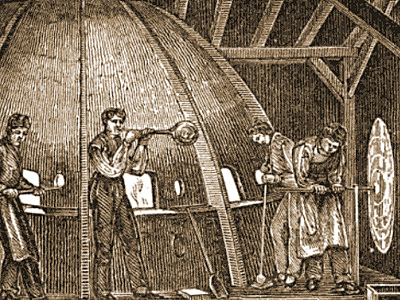1. Which U.S. president did not use a Bible at his inauguration?
Franklin Pierce. He placed his hand on a law book. Pierce was suffering a crisis in faith after the death of his 11-year-old son in a train accident on the way to Washington for the inaugural. And he didn't "swear" to the oath; instead, he "affirmed" it. (Beyer, Greatest Presidential Stories Never Told, 9)
2. Which mishap occurred at the inauguration of George Washington?
Nobody thought to bring a Bible to take the oath of office. A quick search of Federal Hall failed to turn up a copy of the Bible. New York chancellor Robert Livingston, who was to administer the oath, remembered there would be a Bible at the nearby Saint John’s Masonic Lodge. The Masonic Bible was opened to a random page from Genesis and Washington placed his hand on it as Livingston administered the oath. After reciting the oath of office, President Washington added the unscripted words, "so help me God," a practice that has been followed by almost every president since. The Bible, now known as the Washington Bible, has been used by four other presidents for their inaugurations. A fifth, George W. Bush, had to scrap plans to use the Bible because of bad weather. The book was also used at Washington's funeral, the dedication of the Washington Monument in 1885, and the rededication of the U.S. Capitol cornerstone in 1959. (Beyer, Greatest Presidential Stories Never Told, 8)
3. Which long-winded president delivered the longest inaugural address?
William Henry Harrison. On 4 March 1841, Harrison gave his 8,000-word speech for nearly two hours. At age 68, he was the oldest president yet. To demonstrate that he maintained plenty of youthful vigor, he spoke without an overcoat or hat to ward off the cold. Harrison caught a cold that turned into pneumonia and died a month later. (Beyer, Greatest Presidential Stories Never Told, 46)
4. Which president gave the shortest address?
George Washington. After taking the oath of office on the balcony of Federal Hall in New York City, Washington proceeded to the Senate chamber where he read a speech before members of Congress and other dignitaries. His second inauguration took place in Philadelphia, Pennsylvania, on 4 March 1793, in the Senate chamber of Congress Hall. There he gave the shortest inaugural address on record—just 135 words—before repeating the oath of office. (Inaugural History, at http://inaugural.senate.gov/history/daysevents/inauguraladdress.cfm)
5. Why did Zachary Taylor postpone his inauguration?
The date in question, 4 March 1849, fell on a Sunday. James K. Polk's term of office officially ended at noon on Sunday, March 4, 1849. Taylor refused to take the oath of office until Monday, March 5, 1849. Missouri senator David Rice Atchison was serving as president pro tempore of the Senate, which made him next in line after the president and vice president. (Beyer, Greatest Presidential Stories Never Told, 60 )
6. Which president was inaugurated in secret?
Rutherford B. Hayes. The presidential election of 1876 was one of the closest and most disputed elections in history. The outcome was in dispute until a few days before the inauguration, when Republican Hayes was declared the winner by one electoral vote. Angry Democrats threatened to protest. President Ulysses S. Grant ordered troops to Washington to prevent trouble. Grant's term was due to expire at noon on Sunday, March 4. In observation of the Sabbath, Hayes' inauguration wasn't scheduled until Monday. Republicans feared that Democrats might somehow take advantage of the one-day gap to install Tilden in the White House or otherwise embarrass them and decided to take preemptive action. Before a gala White House dinner on Saturday, March 3, Grant escorted Hayes to the Red Room. There, in front of a handful of cabinet members, Chief Justice Morrison Waite secretly administered the oath of office. The men returned to the dinner without announcing the inauguration. Hayes was publicly inaugurated the following Monday at noon. (Beyer, Greatest Presidential Stories Never Told, 96)
7. Whose inaugural address was the first to be broadcast on television?
Harry S. Truman. Truman’s inaugural address was broadcast in 1949. James Buchanan's 1857 inauguration was the first to be photographed. William McKinley held the first inaugural ceremony recorded by a motion picture camera in 1897. Herbert Hoover's inauguration was the first recorded by talking newsreel in 1929. In 1997, William J. Clinton was the first President whose inaugural ceremony was broadcast live on the Internet. (Inaugural Inaugural http://inaugural.senate.gov/history/factsandfirsts/index.cfm)
8. Who was the first president to take the oath of office in Washington, DC?
Thomas Jefferson. On March 4, 1801, Jefferson walked with few attendants and little fanfare to the Capitol building from his nearby lodgings at a boarding house to become the first president to be inaugurated in the nation's new capital city. Upon entering the Senate chamber, now the Old Supreme Court Chamber, Jefferson took the oath of office administered by Chief Justice John Marshall and addressed the audience gathered in the Senate chamber. After his inaugural address he finished his day with a meal at the boarding house. (Inaugural, http://inaugural.senate.gov/history/daysevents/potusswearingin02.cfm)
9. How many presidents did NOT take the oath of office in Washington, DC?
6. George Washington: 1789—Federal Hall, New York City; 1793—Congress Hall, Philadelphia; John Adams: 1797—Congress Hall, Philadelphia; Chester A. Arthur: 1881—residence, New York City; Theodore Roosevelt: 1901—residence, Buffalo, New York; Calvin Coolidge: 1923—residence, Plymouth, Vermont; Lyndon B. Johnson: 1963—Air Force One, Dallas, Texas
10. Who was the first president to be inaugurated on January 20 instead of March 4?
Franklin D. Roosevelt. A change made by the 20th Amendment to the Constitution called for Roosevelt to be inaugurated on 20 January 1937. This year also marked the first time the vice president was inaugurated outdoors on the same platform with the president. (Inaugural, http://inaugural.senate.gov/history/factsandfirsts/index.cfm)







